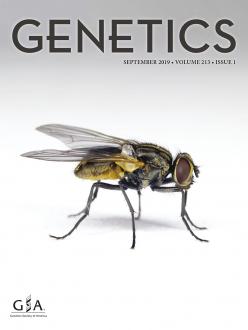Natural Variation and Genetic Determinants of Caenorhabditis elegans Sperm Size.
Genetics. 2019 Aug 8. pii: genetics.302462.2019. doi: 10.1534/genetics.119.302462. [Epub ahead of print]
Gimond C1, Vielle A1, Silva-Soares N2, Zdraljevic S3, McGrath PT4, Andersen EC3, Braendle C5.
Author information
1. Université Côte d’Azur, CNRS, Inserm, IBV.
2. Université Côte d’Azur, CNRS, Inserm, IBV; Instituto Gulbenkian de Ciencia.
3. Northwestern University.
4. Georgia Institute of Technology.
5. Université Côte d’Azur, CNRS, Inserm, IBV braendle@unice.fr.
Abstract
The diversity in sperm shape and size represents a powerful paradigm to understand how selection drives the evolutionary diversification of cell morphology. Experimental work on the sperm biology of the male-hermaphrodite nematode C. elegans has elucidated diverse factors important for sperm fertilization success, including the competitive superiority of larger sperm. Yet despite extensive research, the molecular mechanisms regulating C. elegans sperm size and the genetic basis underlying natural variation in sperm size remain unknown. To address these questions, we quantified male sperm size variation of a world-wide panel of 97 genetically distinct C. elegans strains, allowing us to uncover significant genetic variation in male sperm size. Aiming to characterize the molecular genetic basis of C. elegans male sperm size variation using a genome-wide association study (GWAS), we did not detect any significant Quantitative Trait Loci (QTL). We therefore focused on the genetic analysis of pronounced sperm size differences observed between recently diverged laboratory strains (N2 versus LSJ1/2). Using mutants and quantitative complementation tests, we demonstrate that variation in the gene nurf-1 underlies the evolution of small sperm in the LSJ lineage. Given the previous discovery that this same nurf-1 variation was central for hermaphrodite laboratory adaptation, the evolution of reduced male sperm size in LSJ strains likely reflects a pleiotropic consequence. Together, our results provide a comprehensive quantification of natural variation in C. elegans sperm size and first insights into the genetic determinants of Caenorhabditis sperm size, pointing at an involvement of the NURF chromatin remodelling complex.
PMID: 31395653
DOI: 10.1534/genetics.119.302462

